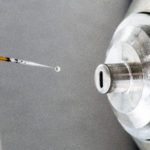Link to Pubmed [PMID] – 34747040
Link to DOI – 10.15252/embj.2021108341
EMBO J 2021 Nov; (): e108341
Excitatory amino acid transporters (EAATs) maintain glutamate gradients in the brain essential for neurotransmission and to prevent neuronal death. They use ionic gradients as energy source and co-transport transmitter into the cytoplasm with Na+ and H+ , while counter-transporting K+ to re-initiate the transport cycle. However, the molecular mechanisms underlying ion-coupled transport remain incompletely understood. Here, we present 3D X-ray crystallographic and cryo-EM structures, as well as thermodynamic analysis of human EAAT1 in different ion bound conformations, including elusive counter-transport ion bound states. Binding energies of Na+ and H+ , and unexpectedly Ca2+ , are coupled to neurotransmitter binding. Ca2+ competes for a conserved Na+ site, suggesting a regulatory role for Ca2+ in glutamate transport at the synapse, while H+ binds to a conserved glutamate residue stabilizing substrate occlusion. The counter-transported ion binding site overlaps with that of glutamate, revealing the K+ -based mechanism to exclude the transmitter during the transport cycle and to prevent its neurotoxic release on the extracellular side.



